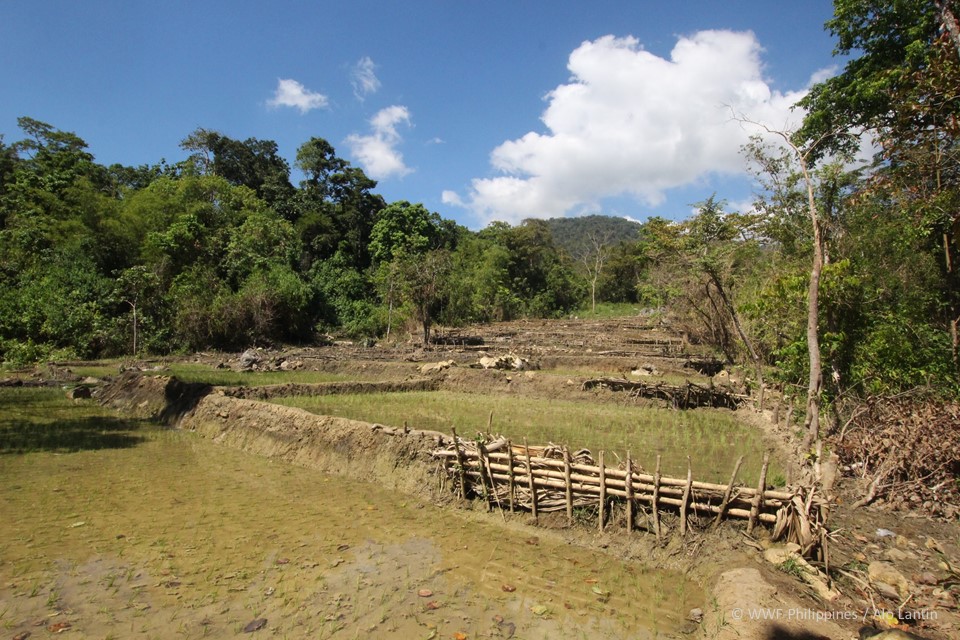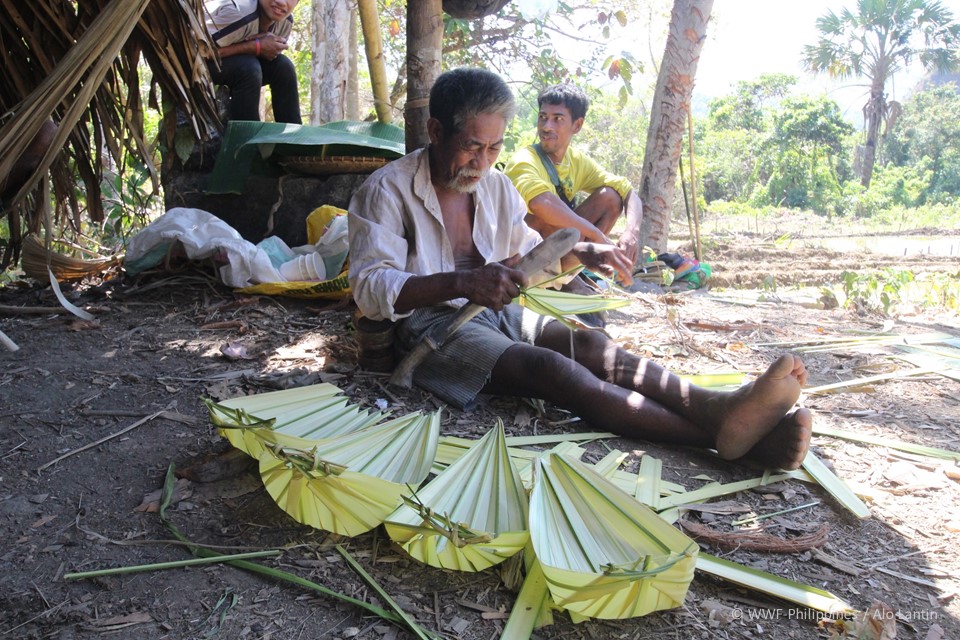Communal Farm Constructed by Indigenous Peoples in Mindoro, Milestone in Tamaraw Conservation
June 2019

The communal farm, built into the hillside at the foot of Mts. Iglit-Baco National Park. The communal farm can provide food and livelihood security for 25 Mangyan families, and was built to incorporate natural features so as to reduce stress on the mountainside. Photograph © Alo Lantin / WWF-Philippines
The prospect of stable lives and food security for the indigenous people of Mindoro bring hope for the continued conservation of the tamaraw.
September 2018 saw the start of construction work on a communal farm in the foothills of Mts. Iglit-Baco National Park in central Mindoro, which is home to the native tamaraw, an endangered endemic species of buffalo whose population on the slopes sits at 480 as of a census conducted in 2019.
The tamaraw shares its home with over a thousand Mangyan households. While not a staple part of local diets, the tamaraws are threatened by a lack of food security amongst the Mangyan, the native indigenous people of Mindoro. Slash-and-burn farming and the rare instances of tamaraw hunting have left their numbers at risk. Setting up the communal farm will address issues on food and livelihood security, specifically for the 25 families in the nearby Mangyan cluster, Sitio Tamisan.
The 2-hectare farm was constructed by the Tau Buid, a linguistic group of the Mangyan, with the assistance of the World Wide Fund for Nature (WWF) Philippines through the support of Sun Life Financial Philippines – Foundation.

Rice crops grow in plots along the length and breadth of the communal farm. Photograph © Alo Lantin / WWF-Philippines
The communal farm project was first conceptualized when WWF-Philippines recognized the threat posed by the scarcity of food and unstable livelihoods to the natural environs of Mts. Iglit-Baco. By augmenting the livelihoods of the Mangyan, the households living in the area have consistent access to food as well as income for their basic needs. This subsequently reduces their reliance on practices that could be damaging to the surrounding forests, thus securing the local ecosystem and protecting the tamaraw without jeopardizing the indigenous peoples living in the area.

Tau-Buid Tribal Chief Fausto Novelozo makes plates out of bamboo along the border of the communal farm. Photograph © Alo Lantin / WWF-Philippines
“This is an old, abandoned slash-and-burn farm. It was left alone for a long time. We decided the land would be more productive as farmland,” said Luis Caraan, WWF-Philippines Tamaraw Conservation Project Manager, gesturing to the communal farm. The farm was built with the surroundings taken into consideration, with natural features incorporated into its construction in order to reduce negative impacts on the local environment. The slopes of the mountain, explained Caraan to provide an example, are used to bring stream water from the forest down along the farms without means of human intervention. Because of this, the communal farm’s impact on the environment has been kept to a minimum.
Construction of the farm was completed early 2019, while the first harvest was collected in April. The current farm provides sufficient food and livelihood for one community, but WWF-Philippines plans to expand it and to develop more throughout Mts. Iglit-Baco National Park, within reach of other Mangyan clusters. For the sake of striking a balance between man and nature and conserving critical habitats and endemic species, WWF-Philippines works for the food security of the Philippines’ most vulnerable peoples.
For more information, please contact:
Communications & Media Manager Mr. Dan Ramirez (dramirez@wwf.org.ph)
